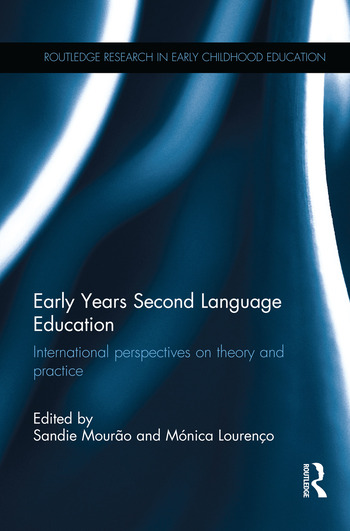- Contributor
- Editors
- Publisher
- Year
- ISBN
- Language
- Nayr Ibrahim
- Sandie Mourão & Mónica Lourenço
- Routledge
- 2014
- 9781138220416
- English
The age for early language learning has dropped dramatically in the past decade to include children under 6 years old, yet very little published research exists to support the implementation of such programmes.
Drawing on a synthesis of theory, research and practice, this edited volume makes an innovative contribution to literature concerning language education for very young children. It explores language learning in a wide range of geographical contexts with reference to second and foreign language learning, bilingualism and plurilingualism with children under the age of 6 years old. Chapters present discussion around teacher education, policy-making, international case studies, school and home-based projects, code switching and language use, and methodologies and approaches.
Early Years Second Language Education: International perspectives on theory and practice will be essential reading for researchers, academics, teacher trainers, and post-graduate students in the fields of early years education, foreign and second language education, language didactics and teacher education.
Early second language (L2) learning has become increasingly popular in Slovakia in recent years for several reasons. It reflects the European Union policy of multilingualism going hand in hand with the introduction of compulsory learning of the first L2, usually English, in primary education during the latest educational reform. The investigation surveyed the quantity and quality of early L2 education in Slovakia, with the intention of using the findings to draft suggestions and recommendations constituting a framework for pre-primary L2 teacher training programmes. In accordance with current legislation on education, pre-primary institutions represent the first step in the Slovak school system. Questionnaire responses from the school directors belonged mostly to institutions that were situated in larger municipalities, that is, the district and regional capitals. The languages taught included English, in an expected majority of schools, German and French, and 3 per cent of pre-primary institutions were described as offering education in two L2s.


